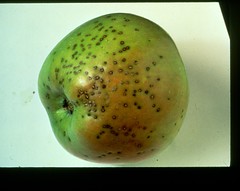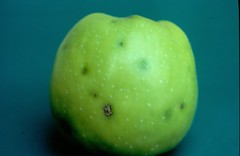Virus and Other Graft-Transmissible Diseases and Disorders of Apples
Virus diseases cause economic losses through lower yields and reduced quality of apples and apple products. In general, virus diseases in perennial crop plants, such as apples, are more potentially damaging than in annual crops. Viruses can remain latent, spreading through an orchard and inflicting damage, often without the growers’ knowledge. Latent virus infection can produce small to moderate losses in fruit production. Often growers can maintain the productivity of diseased …



